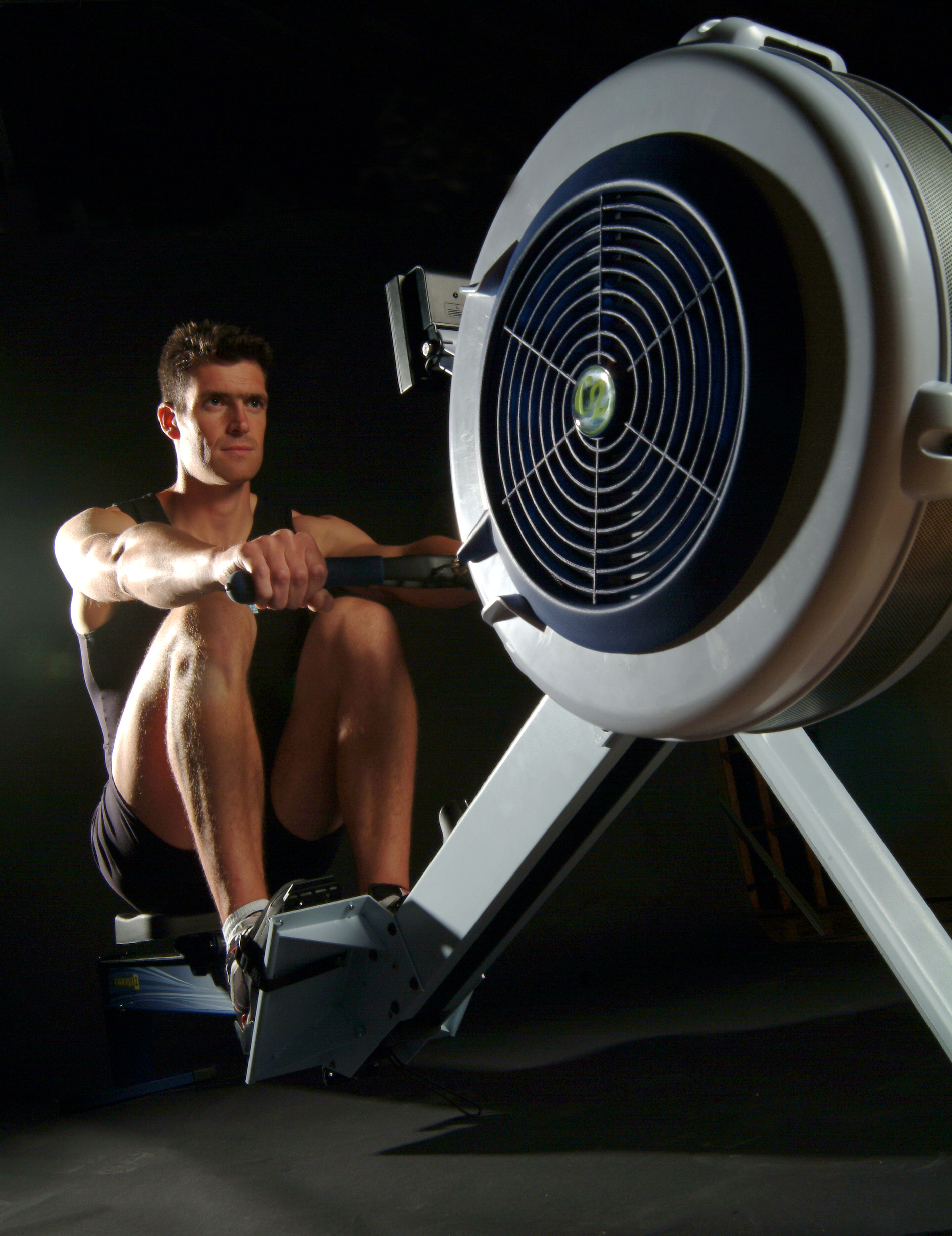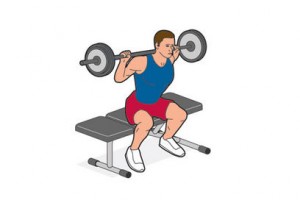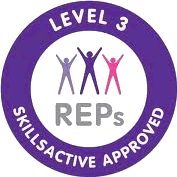Fitness First FitBrit challenge 2011
FitBrit challenge
For all of you out there who fancy a challenge and want to see what your fitness levels are like you should give the FitBrit challenge a go. It’s an 8 based exercise circuit workout that must be performed none stop, involving a mixture of Cardio Vascular and muscular endurance exercises. Give it a go and see what time you can achieve
I managed it in 11 minutes and 56 seconds
Here is a list of the exercises you need to do
1. Row – Men 500m , Women 400m
Set the rower to level 10. The clock starts when you begin your first stroke.
It doesn’t count if… you put the handle down before the meter shows your required distance.
2. Seated Shoulder Press – Men 20kg Barbell 30 reps , Women 10kg Barbell 30reps
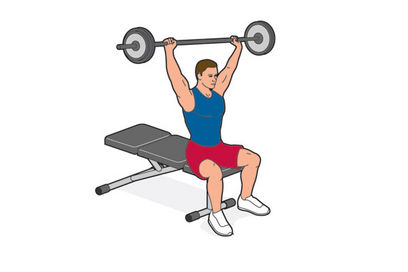 Sit on a bench and press the bar from chin height until it is fully extended over your head.
Sit on a bench and press the bar from chin height until it is fully extended over your head.
It doesn’t count if... you don’t use the full range of motion for each rep
3. Bunny hops – Men 30 reps , Women 20 reps
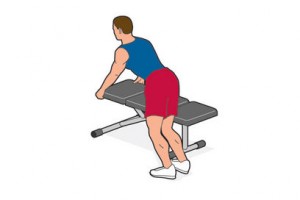 Place your hands on one end of the benchand jump over it from side to side, keeping your feet together.
Place your hands on one end of the benchand jump over it from side to side, keeping your feet together.
It doesn’t count if… you don’t launch and land with both feet together
4. Bike – Men 3km , Women 3km
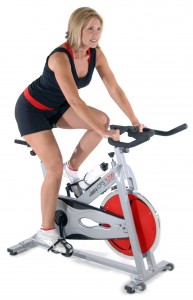 Set the bike to any resistance. The ‘sprint-and-freewheel’ style of riding is NOT acceptable.
Set the bike to any resistance. The ‘sprint-and-freewheel’ style of riding is NOT acceptable.
It doesn’t count if… you get off the bike before the meter reads the required distance
5. Press-ups– Men 30 reps , Women 30 reps
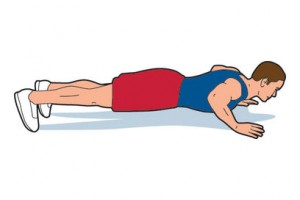 Keep your hands shoulder-width apart and body straight. Bend your elbows until your chest is a fist-width from the floor then push back up until your arms are straight. Women can rest on their knees.
Keep your hands shoulder-width apart and body straight. Bend your elbows until your chest is a fist-width from the floor then push back up until your arms are straight. Women can rest on their knees.
It doesn’t count if… you’re more than a fist-width’s height above the floor at the bottom of the move
6. Box- Jumps – Men 30 reps, Women 20 reps
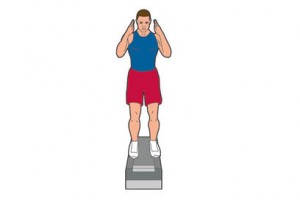 Stand astride a Reebok Deck set to full height. Jump with both feet onto the surface of the deck and back down as quickly as you can.
Stand astride a Reebok Deck set to full height. Jump with both feet onto the surface of the deck and back down as quickly as you can.
It doesn’t count if… your feet don’t land on top of the deck (tapping the sides isn’t good enough).
7. Squats – Men 20kg Barbell 30 reps , Women 10kg Barbell 30reps
Hold the bar across the back of your shoulders and stand in front of the bench. Squat down until your backside touches the bench.
It doesn’t count if… you don’t squat low enough to touch the bench or go to stand fully afterwards.
8. Run – Men 1 km , Women 800m,
Get on the treadmill and set it to any speed you can manage. Your time finishes as soon as you reach the required distance.
It doesn’t count if… you hold on with your hands at any time.
Please make sure you warm up and stretch off first before you give this routine a try and don’t forget to have a cool down and stretch afterwards. Top tip have water and fruit on standby for when you finish
Go on give it a go and see what time you can get you might just surprise yourself !!
Kettlebells – What and Why ?
Kettlebells – what and why are they Beneficial to exercise
I hope you all enjoyed my first exercise on deadlifts and I’m sure by now your technique is spot on and your strength is going through the roof.
Like deadlifts, I find kettlebells are very technical and hard to use, so until you know what you are doing you should leave them alone.
The last thing you want to do is injure yourself and not benefit from what kettlebells can do for you.
Firstly what are kettlebells “well they are those funny shaped balls with a handle on top of them…..shaped like a kettle?!’ The clue may just be in the name. But seriously kettlebells have been used for hundred of years and have a lot of key benefits to them.
The great thing about kettlebells is that they require you to focus on whole-body conditioning. So that means that no muscle is ever used on its own. They also involve a lot of compound and kinetic movements. Lifting and controlling a kettlebell forces the entire body, and specifically the core, to 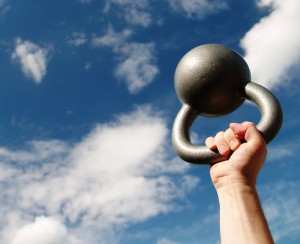 contract as a group, building both strength and stability at the same time. Kettlebells are great for working your posterior chain (basically from your head down your spine to your toes). They are a great way for re-engaging your glutes muscles (bum) as all the action and force comes from contracting and using your bum as your dominant muscle.
contract as a group, building both strength and stability at the same time. Kettlebells are great for working your posterior chain (basically from your head down your spine to your toes). They are a great way for re-engaging your glutes muscles (bum) as all the action and force comes from contracting and using your bum as your dominant muscle.
Unfortunately many of us now spend a lot of time sitting down at work (and in some peoples cases just generally!) this therefore puts a lot of strain on our hamstrings and lower back. 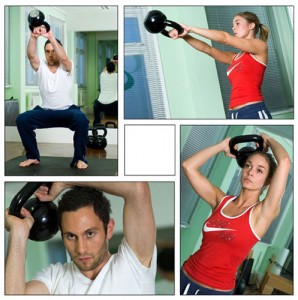
Over time our Glutes become lazy and less dominant and that is why a lot of us can suffer from lower back pain and tight hamstrings. Muscles are all connected to each other and work together and no muscle should ever be isolated remember your bum is one of your biggest muscles in your body so lets use it!
The benefits from Kettlebells are extensive, they can improve your posture, assist with weight loss, help with body conditioning, as well as improving your muscular strength, and bone density. The density of our bones is key as we get older and to women especially who can suffer from Osteoporosis (causes bones to become fragile and more prone to breaking.). They are also great for improving your overall Cardiovascular fitness and let’s not forget re-activating the glutes.
To sum up I think Kettlebells are a great way of exercising, but you must know what they are and how to use them before you start swinging them about.
I have put together a little video for you below; this will hopefully be helpful to you. It is a little circuit consisting of 4 exercises; 3 using the kettlebells then one based on just cardio. Give it a go and try to do the circuit up to 5 times with a minute rest in-between.
Have Fun and look before you swing!!!!!!!!
How to perform a Deadlift
The Deadlift is an integral, yet often missing component of a strength building program. That’s not to say that everyone should be performing this movement or one of its variations, but the benefits of the Deadlift for a power or strength building program are innumerable.
What is a deadlift?
The deadlift is a compound movement that works grip strength with the erector spinae, gluteus maximus, adductor magnus, hamstrings, and quadriceps serving as the primary muscles. The remaining muscles are involved in stability control. It is, in a sense, the purest test of strength because it is one of the few lifts of dead weight (weight lying on the ground). In most other lifts there is an eccentric (lowering the weight) phase followed by the concentric (lifting the weight) phase. The eccentric phase essentially stores some amount of energy in the stretched muscles and tendons, making the concentric phase somewhat easier. The deadlift, however, is solely a concentric movement. The lift begins at its most difficult point, with no inertia or stored energy.
Deadlifts build back strength. Deadlifts teach you to keep your lower back rigid against a load. Keeping your back straight is critical to avoid injuries when lifting heavy objects from the floor.
There are also many various types of deadlifts which are good for putting more or less emphasis on the various muscles that you would use in a normal deadlift For example: Romanian deadlift, Sumo deadlift, Stiff leg deadlifts, Suitcase deadlifts
Deadlift benefits:
- To build strength and enhance power potential
- To add muscle mass to the entire body
- Develop core strength and rigidity
- Injury prevention, in everyday life you have to pick things off the floor
- Support grip strength
- The release of testosterone and growth hormone. ( help increase muscle gains)
Muscles worked
Since the deadlift is a compound movement it utilizes nearly every major muscle of your body:
Lower Back ,Calves, Forearms, Glutes, Hamstrings, Lats, Middle Back, Quadriceps, Traps, Deltoids
Dangers of having poor technique
Improper form (not maintaining a neutral spine) can precipitate new conditions, aggravate existing ones, and possibly cause injury, especially the heavier the weight one lifts. Failure to maintain neutral spine, primary job of the back muscles, during the movement causes undue stress to the spinal discs, by pinching the front and leaving a gap at the back, forcing the internal fluids to compress towards the back, and potentially causing a herniated disc. This is especially true of the lumbar region of the spine, which bears the bulk of the compressive forces on the upper body.
In addition, the compression can squeeze the spinal roots of the spinal cord, causing nerve-conditions like lumbago or sciatica.
It is important that those executing a deadlift be proficient in the recruitment (voluntary activation) of the deep abdominal and trunk muscles. In particular, it has been suggested that recruiting the transversus abdominus muscle provides a natural corset-like brace around the trunk, helping to protect against injury. A good method to help achieve this and avoid lower back injuries is to keep the abdominals braced. This will build anterior support for the spine. However, as a cautionary note, this technique can drastically increase blood pressure during the exercise and should not be performed by people with known or suspected heart conditions.
Using an underhand grip is potentially hazardous on heavy deadlifts as a supinated grip shortens the biceps muscle and increases the load on it, possibly leading to a rupture of the muscle or connecting tendons. The risk is most notable in individuals without full flexibility in the elbow joint. However, using an over-under grip allows one to lift more weight due to the reduced chance of the weight falling out of one’s hands.

